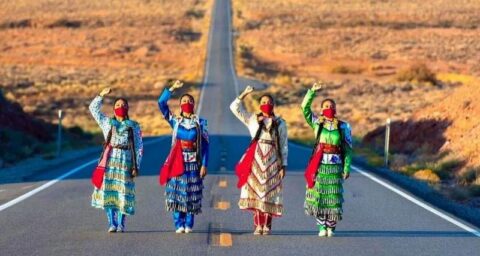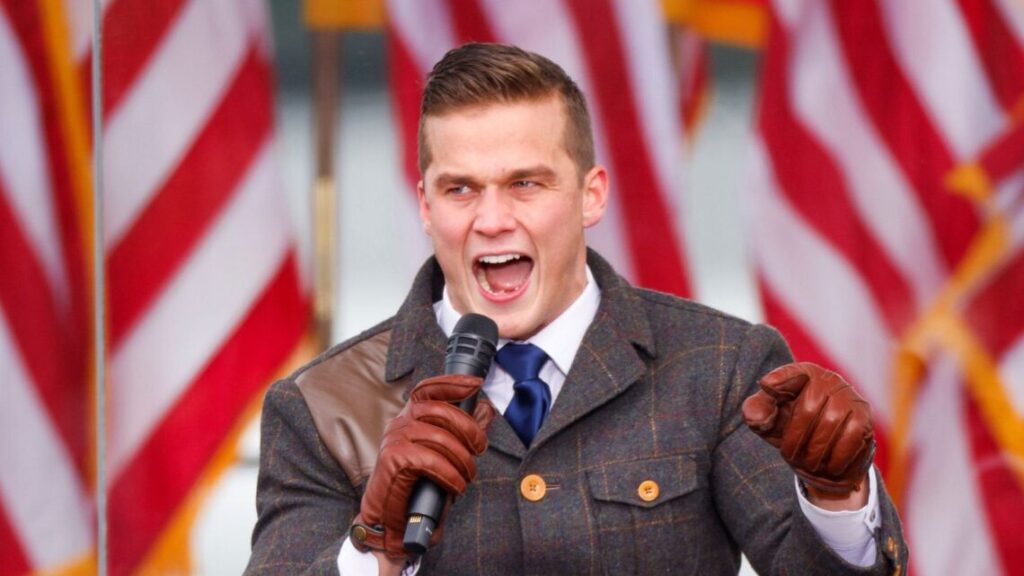For $449,000 you could buy 143 acres of forests with sweeping views of the rugged shoreline of Big Lake in Maine, on the east coast of the United States. “[It’s] a unique property … steeped in history … with only two owners in the last 95 years,” wrote the real estate agent from privateislandsonline.com.
In fact, Kuwesuwi Monihq, or Pine Island, is its original name, and it technically has just one true “caretaker”; the Passamaquoddy: a small tribe of 3,700 Native Americans who had lived there for at least 10,000 years.
It’s a spiritually important place for the tribe, filled with graves from devastating smallpox, cholera and measles outbreaks caused by white settlers.
In 1794 it was officially granted to the tribe by Massachusetts for their service during the revolutionary war. But after 1820, when Maine became its own state, colonialists changed its title, voiding the treaty. In the 1851 census there were 20 Passamaquoddy living there, in 1861 there were none.
By 2021, they had not only lost all but 130,000 acres of their original 3m.Theyhadn’t stepped foot on Pine Island in 160 years.
“The land was stolen from us and it’s been every chief’s goal ever since to return it,” said chief William Nicholas, 51, leader of the tribe’s Indian township reservation for the last 11 years, who spotted the advert on a shop noticeboard on 4 July last year.
In March, with a grant from conservation charities, the tribe raised $355,000, and finally bought the island back.

Chief William Nicholas, 51, leader of the Passamaquoddy’s Indian township reservation. Photograph: The Guardian
Donald Soctomah, the tribe’s historic preservation officer, added: “Our concept of land ownership is that nobody ‘owns’ land. Instead, we have a sacred duty to protect it. This is like finding a lost relative.”
The reclaiming of Pine Island is the latest successful “land back” attempt by US indigenous groups following the loss of 1.5bn acres since 1776, resulting in poverty, violence and cultural apartheid.
In July last year, the formerly landless Esselen tribe purchased 1,200 acres in California’s Big Sur for $4.5m, also donated by conservationists, 250 years after being forced into Christian missions.
In 2019, the Wiyot tribe won back the 280-acre Duluwat Island in California, when the city of Eureka returned it for free, 159 years after a massacre.
There’s also a growing movement by many public and private institutions to be more transparent, with Harvard University, the Metropolitan Museum of Art and the Oscars announcing “land acknowledgements”. The Native Land app will even show you what territory your house is built on.
Whilst critics call land acknowledgments “empty gestures”, others claim it paves the way for legal victories.
Dr Mishuana Goeman, a professor in American Indian Studies at the University of California Los Angeles and member of New York’s Tonawanda Band of Seneca tribe, said acknowledgements are “a good start” but that a big catalyst has been the pandemic and murder of George Floyd.
“It’s like people suddenly woke up to centuries of atrocities against indigenous and black communities, and are more open to dialogue,” she said.
In July last year, amid global marches on racial injustice, protesters and tribal citizens blocked roads around the tourist destination of Mount Rushmore, in South Dakota, demanding the government hand it back after it was taken from the Lakota in 1877, despite a treaty, because gold was discovered.
In 1980 the supreme court granted the tribe compensation valued at $1bn in 2011, but they want their home, not cash.
Dr Goeman said it was an example of “land back being about more than justice for the indigenous and money”.
“It’s about having healthier relationships with the land for the good of humanity,” she said.
Increasingly, this is why conservation charities with deep pockets are stepping in.
The Passamaquoddy bid was funded by First Light; a collective of ecological groups founded in Maine four years ago to return tribal lands.
“We have a role in the systemic injustice that was inflicted on indigenous people and therefore a responsibility addressing that,” said Mark Berry, a forest director for First Light member, The Nature Conservancy, who donated the bulk of the island’s funding, as well as returning land it owned to tribes in Nebraska, Alaska and Oregon.
Peter Forbes, another First Light member, added: “This is about keeping our heads down and centering tribal voices. If the land hadn’t been stolen, they wouldn’t need to buy it back in the first place.”
For the Passamaquoddy, who lost members to Covid-19, reacquiring Pine Island during a pandemic is significant.
It was during the “Great Dying”, when 90% died from European diseases between the 1500s-1800s, that the island came to their rescue.
In an act of self-sacrifice, infected members quarantined on the neighboring island of Muwinuwi Monihk, that was renamed “Gordon’s Island” by the colonialists who took it, but which was returned by a paper company in 2003.
Corey Hinton, a young Passamaquoddy lawyer who has just welcomed a new baby, told the Guardian: “It made me realise that my people have lived and died on that island since time began. When the pandemic is over, we will return to dance with our ancestors again.”





Great that they are buying their inheritance: now they need to keep it and share with the Indian nations and improve it: for it’s a blessing to restore what was lost. Need to stock up with wild game and make these landscapes a paradise.